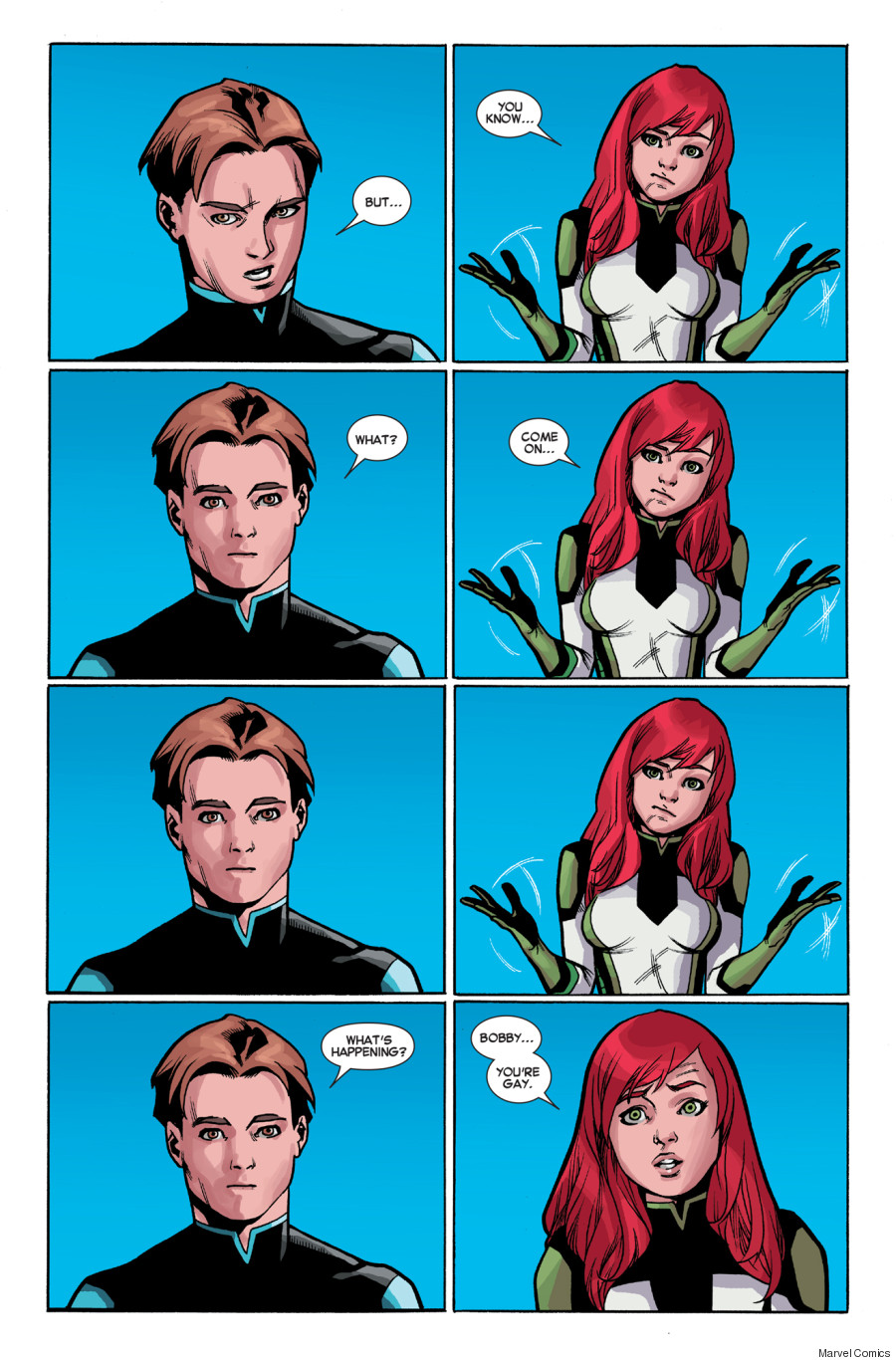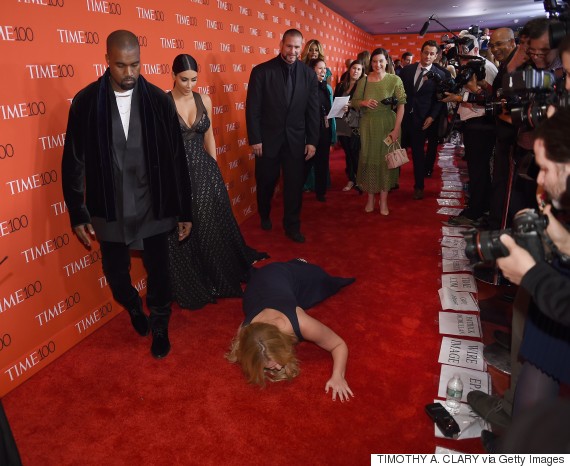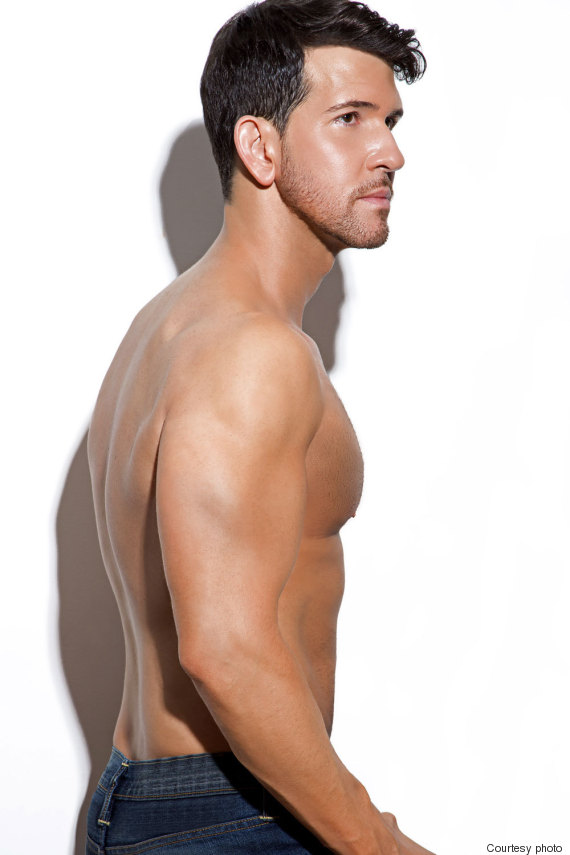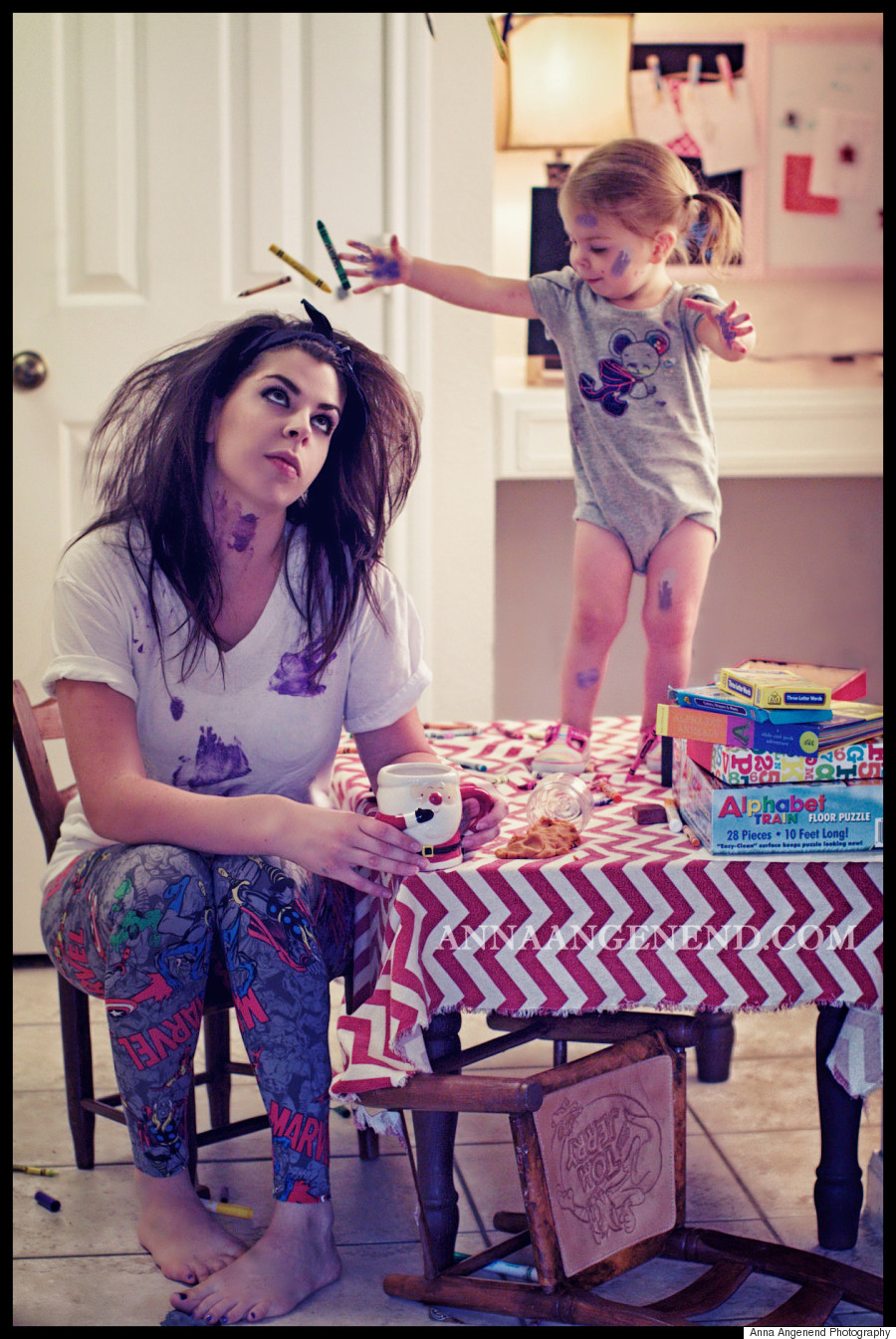The following article is provided by Rolling Stone.
By BRIAN HIATT
"You've got to help me with this ankle bracelet – it shocks me if I try to go to Warner Bros.," says Joss Whedon. The writer/director of "Avengers: Age of Ultron" is, of course, joking: While he did just spend three months as a virtual prisoner on Disney's Burbank studio lot, living right on the property, working seven days a week away from his family, the ordeal was self-imposed. "Apparently you have to make the whole movie," he says, still looking weary. "I slaved. I was writing dialogue until a week ago: 'Oh wait, this is cleaner, this explains better, here's an opportunity.' At the same time, on the last day, I was like, 'you know, we can take out this word.'"
In the dark editing bay where he finished the highly anticipated sequel to the 2012 blockbuster, and then over lunch at Disney's on-site restaurant – where the salt shakers are shaped like Mickey Mouse – Whedon spoke at length about the film, the Hulk, and his future. (Some of the following interview appears in our new Hulk-themed cover story, which also features Mark Ruffalo and more).
How did you face what seems like the constant one-upmanship between summer blockbusters?
The first step is, we don't chase bigger. And I told [Marvel Studios president Kevin Feige] that my secret dream is that this movie is shorter than the first one. And it is. It's one minute shorter.
The 15 Greatest Superhero Movies
Nicely done.
But what you don't want to do is take what you did and pile on, to create bloat or a sort of big echo of what you did before. There are so many new ideas, so many new interactions and problems, so many new sources of humor and excitement. Find the next story, that's all. That's the only job, I wanted to make a completely new movie about these people, not just make another installment. So it's really about finding where the heart is now. What happens when you have all these people who – when you have this much power – really shouldn't be in the same room together sitting around. What's good and what's very bad about that?
What is your mood when you finish something like this?
I've never done anything like this [
laughs]. The burden of it, usually I can just like tune that stuff out. That's not my job. I'm here to tell a story. But at some point your brain starts running numbers. There's some weird choices in this movie. You know? There's some genuinely strange stuff. It's very new.
Yeah, the decision to make 40 minutes of it black and white and Russian was...
[
Laughs] You know, with hindsight… No, believe me, it's not that weird, but I was like, we're definitely going to go left of center here. And that was an adjustment for people. So, I'm like, if this doesn't work, they're all going to go, "Well, you went left of center!" I just wanted to make it as interesting and complicated – not complicated, complex— as possible, and really get inside these characters' heads.
From Avengers to X-Men: A Brief History of Superhero Movies
Are you really still nervous?
I watched it yesterday, and was just hating life: "No, no. It's wrong." And [editor] Jeff Ford was like, "Joss, you can't do that because you're only going to watch it as someone who's making it. It's done. Now you have to wait and watch it with an audience. Then that part of your brain may shut down. Once you hear people laughing or gasping, then that part of you will go away."
So what helped push this to the last minute?
There's always, "Well, what if? And couldn't we..." That's part of Kevin's style, too – he wants to get his fingers into everything. Some directors, he makes them crazy; some directors he works fine with. Kevin's incredibly smart about rearranging things and finding not just problems but solutions, which is even better. When he and I are in pursuit of the same thing, it's great — and when we're not, it's tough. There's no way you make this movie without a certain amount of friction, and I respect the friction because I usually find that the best work comes out of that. It's like when an actor has opinions about his role, and we're like yeah, you're supposed to. So this movie was tough. Because I was fighting for some things that are a bit different and that I believe in.
I've been in studios where they've been like, 'Maybe it's a rom-com!' and you're like, 'We're doomed.'
The sort of internal, semi-psychedelic trips that the characters are forced into are unusual for the genre.
Yeah, dialing that in was very complicated and painful. And I came away the same way I did the first time: "I've compromised so much! I've given up so much and I had to fight." Even though we're all still trying to make the same movie. I've been in studios where they've been like, "Maybe it's a rom-com!" and you're like, "We're doomed."
But you fight a great deal. You work and you doubt and you shout, and you come away, win or lose, with "This movie is all me, it's so me." That's the thing I like about Marvel. They know I'm gonna make a Marvel movie — but they also know that the definition of that changes with every movie. I look at it like the comic books, because I read all of the Marvel books religiously. And what was great was not just how different the comics were but how different one book would become when a new artist and writer would take over. Which is how I look at "Cap" and "Cap 2." It really was like, oh, a new team is taking over. It's like Frank Miller and David Mazzucchelli showed up. It was a very different tone.
The 10 Greatest Film and TV Superheroes
You've decided that you're not doing an "Avengers" movie again?
I'm not, no. They very sweetly asked me and I'm like, really? No. It would set me for life – and that life would be about five years long. It's only going to have more characters and be longer and be a bigger movie. That doesn't mean it can't be great; a part of me is desperate to do it. Because I still have enormous love for these characters and want to shepherd them through all other things. But the fact of the matter is, it's been over five years really since I created something. I mean, I created the S.H.I.E.L.D. show, but based on their universe, you know.
You got to edit Shakespeare's lines a lot on "Much Ado About Nothing.
"
I did! But it's not quite creating. I just felt like this is the opportunity I have for the first time since I started working, to stop and go in a vacuum, not thinking about deals or friends or genres or networks or anything except what's in here. What would I do? I don't know how I'll approach it, but that's a huge deal for me.
I feel like I'm trying to grow up. And when I look at this movie, there are some things in here I can say, "This is a step forward," and then there are other things I'm like, "Is this a giant step back? Is this me running in place?" And if I were to shepherd an enormous – I mean really enormous, two-part mega monstrosity – I don't think I'd have the opportunity to grow as an artist. I apologize for using that phrase. I feel like I need a different challenge other than, "Oh my God, that's huge."
There's a lot more Hulk in this movie.
The thing that was great about this time with him was that the first time we had to be extremely parsimonious about how much Hulk we had. With this one, we had more leeway, and I got to do what I wanted to do, which was shoot him like a character. We have shots in this movie where I just shoot over your shoulder and you have a fuzzy Hulk shoulder in the frame — that would've been out of the question before. That's expensive, to have a fuzzy Hulk shoulder in the frame, and to let him just be a character in the piece, instead of it being just special effects.
Do you think that registers with viewers more on a subconscious level?
Yeah. I'm always fighting to make the shots less perfect. To say, let's have the bad camera; let's find the Hulk the way we find other people. Particularly in this movie, where I shot it very, very differently than the first. Everything in the first was very deliberate, and in this one, I said I want to go multiple cameras, a lot of sort of documentary-style footage, and worry less about the 3-D — [make] it a little more grown-up and little less presentational. Sometimes I thought, "This is really working," and sometimes I thought "Remember when I used to make decisions?"
Top 40 Marvel Movie Ideas, Ranked
Was there a visual model in your head from other movies?
There are always several movies in my head. I have to say for both "Avengers," the movie that ended up sort of overshadowing all others would probably be "Black Hawk Down," where [director Ridley Scott] is just incapable of shooting an unattractive frame. It never looks like he's trying to prettify things. You just really feel the weight of what these guys are going through, and that's the thing I'm always trying to evoke, is that sort of a toll that it takes.
Mark [Ruffalo] said he had some doubts to overcome about taking the part of the Hulk. What do you remember about your early conversations?
The first thing I remember is that we had lunch and we walked around, and when we got back to the hotel and checked in with the Marvel peeps, they said, "What the fuck, man! Why didn't you call us?" I was like, "We had lunch, and now I'm calling you." They were like, "It's been four hours!" Right up front, we talked about rage; what it means, how it's portrayed, what causes it. We talked about making Banner sort of less whiny and self-obsessed. Later on, after he'd taken the part, we got out some mats and threw each other around some, talking about the way he would fight.
Did you really?
Yeah! It was really fun. And then we did the same thing with mo-cap to see what it would look like on the Hulk. We talked about, you know, he's not just gonna stand there throwing punches; he's gonna bite, he's gonna kick. Don't leave any part of him free, and he never moves backwards. Backwards doesn't suit him. I remember the first time, we were like, what is the first thing that is gonna make you fly into a sudden rage, and we both said, "My daughter." I've gotten better about that.
How did the idea of a romance between Banner and Scarlett Johansson's Black Widow come to you?
Obviously, the two of them have a thang. It just always seemed like something I had already thought of. It made sense to me that they are outsiders in a weirdly similar way, and they are also people who don't have their own movies so I'm actually allowed to play with that a little bit. There's a dynamic between the two of them that is lovely because its sad, and then they played it for enormous charm at the same time. They're my two New York thespians. The two of them together was so — first of all, she's so funny. They're both so funny and goofy, but they work so hard. They have a scene in the middle of the movie that caused my first ever, completely un-ironic group hug. I was just so moved, and they were just so damn good.
From 'Buffy' to 'The Avengers': Joss Whedon's Best and Worst Projects
There's a funny moment early in the movie where she kind of flirtatiously strokes the Hulk's arm.
That's something where I was like, there's physicality to it, but until they finished the rendered art of the Hulk, I didn't realize how flirtatious it was. It's like, oh man. She is working him. She is working
me. She's good!
How many drafts did you go through on the screenplay?
There's not a number. Draft is too strong a word...there's so many changes, there's so much. I went home from the set every night – because we were keeping French hours, and we got home at a decent hour started at the same time every morning – and I'd go and write, every night. It was partially me, partially notes from the actors, partially the studio, like everybody had a hand in "This could be better." But I think in some ways its great to stay fluid, to see what's working and lean into it. There's stuff between Hawkeye and the Scarlet Witch that's some of my favorite stuff in the movie, and it's there because they're the only actors I had. When we started shooting in Italy, I had Quicksilver, Scarlet Witch, and Jeremy Renner; everybody else was busy. So, I'm like "Okay, I guess these guys are gonna have a scene, and I can work with that."
With so many characters, why add Scarlet Witch and Quicksilver? Especially when the X-Men franchise is also using Quicksilver.
We were already planning it when X-Men said, 'Oh we're gonna put in Quicksilver,' and we all sort of went "Ugh." But Aaron [Taylor-Johnson] is phenomenal, and the relationship between him and Scarlet Witch is sweet and different and strange. We need them because their powers are different, their looks are different, and their opinion is different. They will be young, fresh, and interesting. And there will be someone for Ultron to talk to — because all of Ultron's henchmen are Ultron! So he literally can't ever say, "Oh let's go over there" or "Oh no," because his henchmen are himself [
laughs].
-- This feed and its contents are the property of The Huffington Post, and use is subject to our terms. It may be used for personal consumption, but may not be distributed on a website.




























